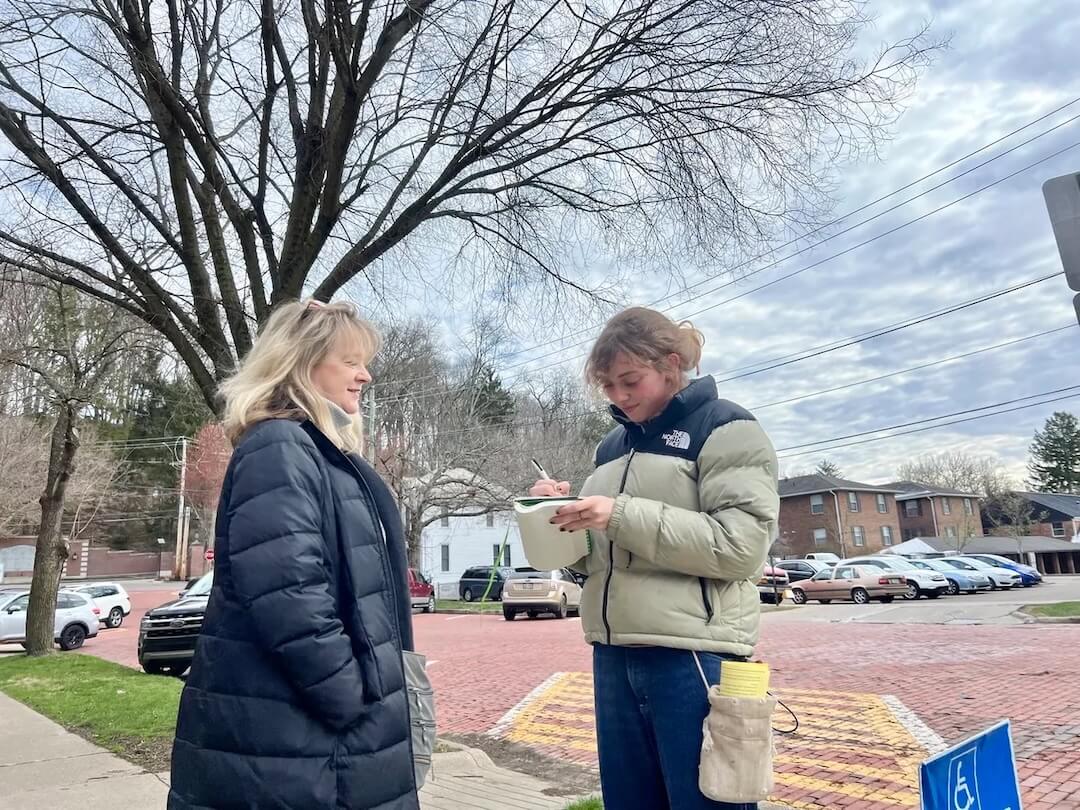Editor’s note: The following collection of immigration reporting resources, story ideas and examples is the first in a series of tip sheets for new and experienced journalists covering immigration at the local and community levels. This tip sheet series is made possible through funding from the Catena Foundation.
I immigrated to Florida with my parents at a young age from Cuba. When I first stepped into a small daily newsroom in Tampa, where I was raised and attended college, my native Spanish became an essential tool for reporting on Latino issues and immigration.
The gift of knowing two languages became obvious two weeks into the job when I was asked to translate for a Spanish-speaking customer who wanted to place a classified. I was in my mid-20s and still a rookie reporter when, a few months later, the editor sent me to cover a strike by Mexican migrant farmworkers against abusive farm owners.
Immigration reporting and writing have always been my passion.
I later reported for The Miami Herald on the Mariel boatlift that carried more than 125,000 refugees from Cuba to South Florida, wrote about my homeland in news stories and a memoir, covered the struggles of the Salvadoran exile community in Washington, D.C., for The Washington Post, and more recently, dove into migration to the U.S.-Mexico border, where I now live and work.
During nearly two decades teaching multimedia journalism at the University of Texas at El Paso, which straddles the El Paso-Ciudad Juarez border, I led a team of faculty and students to create Borderzine, a web magazine about border life and culture.
Immigration is a complex, fast-changing, evolving topic that affects not just the Southern border but most cities, regions, and states across the country where migrants (whether refugees, asylum seekers, the undocumented or legally admitted new arrivals) are resettling. As they become established into receiving communities, their impact is felt across most sectors of society, including the workplace, the housing sector, the business community and within health, education and government services.
With Poynter courses and this tip sheet series, I hope to help fellow journalists, sharing with them the knowledge and expertise I have gained over the last several decades covering immigration stories.
Free Poynter course: Understanding U.S. Immigration From the Border to the Heartland
This is a great starting point. This course provides an overview of immigration enforcement and legal immigration processes, legal historical context and examples of compelling immigration stories, and advice from seasoned veteran journalists.
Paid Poynter course: Beat Academy: Immigration in Focus
Beat Academy is a webinar series that focuses on emerging and trending beats. I was involved in the recent Immigration in Focus session, recorded on March 14 and available for replay. (The $75 price tag includes almost a dozen webinars total, ranging across a series of eight topics.) The tip sheets included with that Beat Academy session offer comprehensive takeaways, including links to recent immigration research by major policy organizations and news stories about developments in immigration enforcement and practices. If you have the means, I recommend enrolling, watching the replay and downloading the tip sheets at the end of the course.
Worker shortage in your area? Here’s how to find out.
Employers and business groups are worried about worker shortages across a variety of sectors (restaurants, farms, processing plants, janitorial services, childcare centers, etc.). To find out where critical worker shortages exist in your community, consider interviewing leaders of the local Chamber of Commerce and the local Hispanic Chamber, if one exists. Then interview supervisors and employers in those industries, along with citizens who use impacted services. How do these shortages affect their businesses or their lives, and what is the impact on the larger community?
Here’s an interesting infographic on immigrant workers in the healthcare industry.
Hurt on the job?
This recent Bureau of Labor Statistics report found a disproportionate number of injuries among foreign workers, especially Hispanics. Check on the number of injuries and deaths among workers in your city, town or region.
Good Samaritans
Local, state, and federal governments aren’t the only entities helping to resettle newly arrived migrants. Individuals, churches, civic groups, and even employers are also stepping up to help with housing, food, health care, education, and other necessities. Consider identifying some good Samaritans in your community. Below are some examples (some of them may appear behind a paywall):
- A Haitian pastor in Boston: ‘They are assets, they are not liabilities’: “Haitian-American pastor’s leadership shines amid migrant crisis”
- A Girl Scout group in Manhattan: “Girl Scout Troop Resolved to Support Migrants Despite Backlash”
- A retired professor in Modesto, California: “Driving With Mr. Gil: A Retiree Teaches Afghan Women the Rules of the Road”
Shortage of immigration judges and huge court backlogs
- U.S. government reports, research from immigration policy organizations and TRAC, a data-gathering center at Syracuse University, reveal the critical shortage of immigration judges to preside over detention cases and process legitimate asylum requests. Spend a day or two inside the immigration court(s) in your region. Story ideas on individual cases are likely to emerge.
- This U.S. Department of Justice manual provides detailed explanations of immigration court terminology, and all aspects of the hearing processes.
- This helpful tool from TRAC provides detailed information on immigration court backlogs from 1998 to last month. The breakdown is by state and nationality.
A new development to watch out for
As reported by The New York Times and other major news outlets, the Biden administration is considering an executive action to cap the number of migrants processed at the border daily and/or weekly, as well as possibly other enforcement actions included in the bipartisan immigration bill that failed to pass Congress last month. Here is Biden’s latest public statement on the possibility of adopting this action.
Thanks, gracias for reading! We’ll be back in May with more resources.







